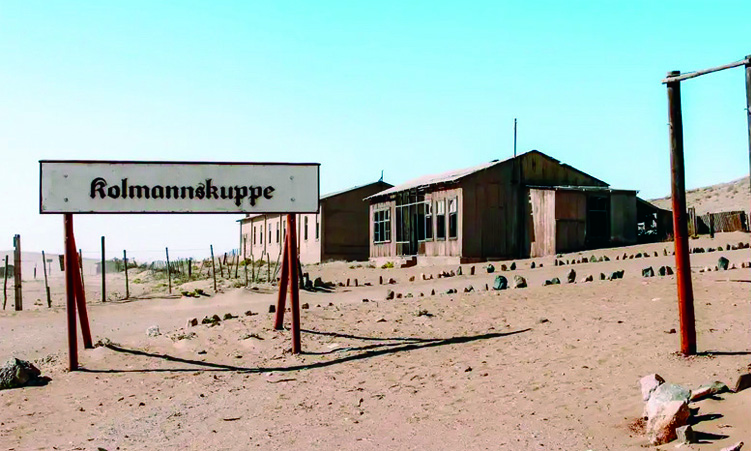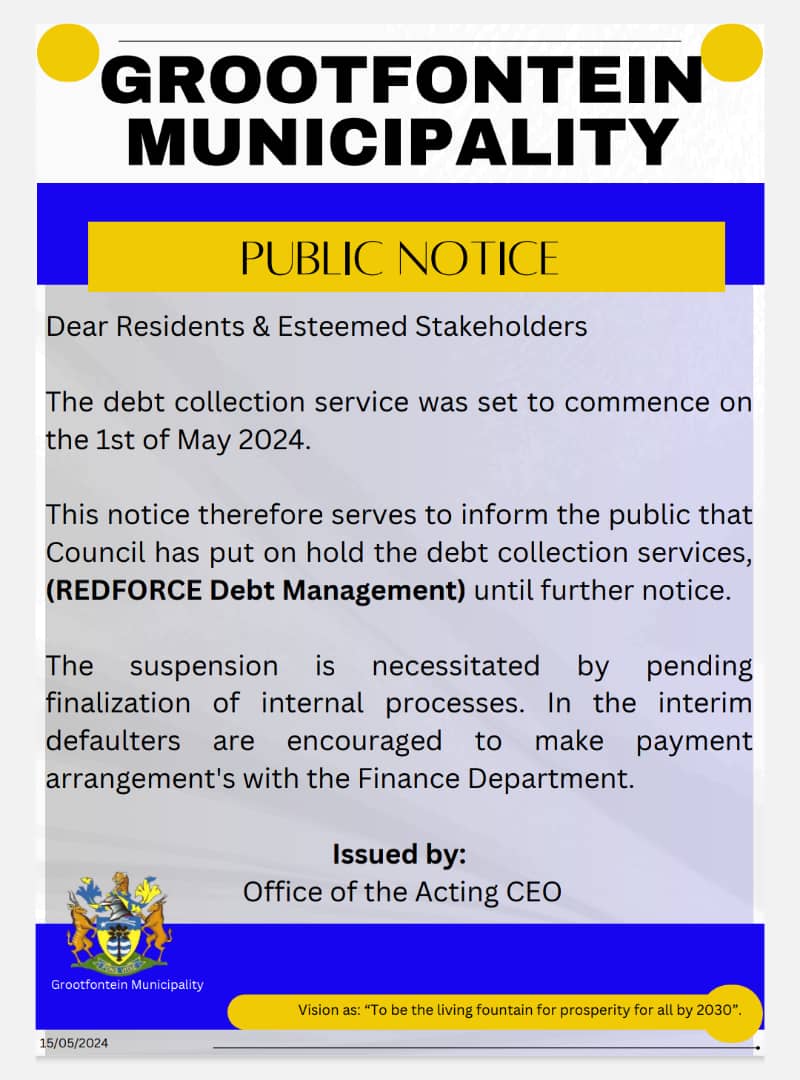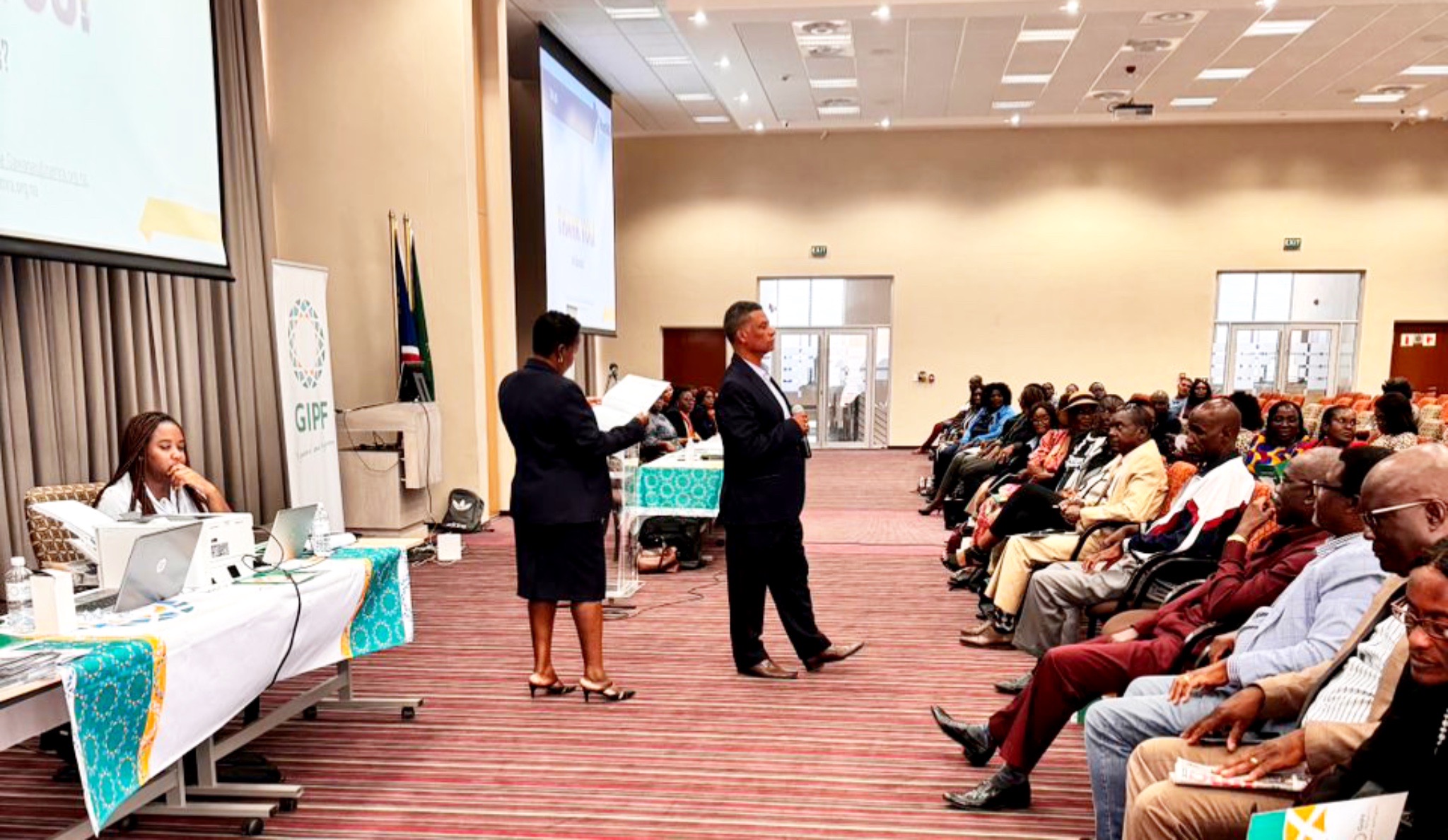When Zacharias Lewala reportedly found a diamond in the desert in 1908, it gave birth to a settlement near Lüderitz.
Driven by the enormous wealth of the first diamond miners, residents built a settlement in an architecture similar to that of a German town.
It was named Kolmannskuppe.
The settlement had a hospital, school, power station, casino, theatre, sport hall, Namibia’s first X-ray station and the first tram in Africa.
But the diamond reserves dwindled in the 1920s and the town was abandoned as prospectors chased new diamond deposits near the Orange River in 1956.
Now, 67 years after the abandonment of Kolmannskuppe generally known as Kolmannskop, a new German-sponsored project has returned to the scene.
Their destination lies 80 kilometres north of Kolmannskop, where they are orchestrating an ambitious green hydrogen
project valued at over N$100 billion, negotiated with the Namibian government under a cloud of secrecy.
The blueprint of the project includes plans for schools, a clinic and a rail network to forge a connection between the new settlement and Lüderitz.
Proponents say at least 15 000 people are expected to be employed during the four-year construction phase of this project.
The Hyphen Hydrogen Energy consortium, led by the German company Enertrag, has the rights to the project for 40 years.
After that, no one knows what will happen.
“We need a strategy for the next 40 years so that we don’t create a new Kolmannskop,” Lüderitz Town Council spokesperson Elwin !Gaoseb says.
Presidential economic adviser and green hydrogen commissioner James Mnyupe insists that a plan will be made.
“B2Gold reserves are running down and they are packing up. Namdeb Oranjemund’s diamonds were getting done and they were packing up. What did we do with Namdeb?” the adviser asks.
“We gave them a break on their royalties so they could take additional money to excavate more diamonds and stay longer. They did and extended the town’s life and that of the mine by about 30 years …
“This is not Kolmannskop, this is not Rössing. Things could change of course, but the big difference here is that we are mining an infinite resource, and it’s possible that these projects could go for many decades without end of life,” Mnyupe says.
He admits, however, that Lüderitz needs support from the government.
The green hydrogen project has been criticised for its secrecy in the procurement process, but Mnyupe insists the deal is not secret.
“This is the most public document ever. It was even taken to parliament where a parliamentarian tore it up,” he says.
“We even have a dedicated green hydrogen website,” he says.
Hyphen Hydrogen Energy chief executive Marco Raffinetti has said it is not in the country’s best interest to publish the green hydrogen agreement between his company and the government.
Institute for Public Policy Research director Graham Hopwood says if a project starts off like this, it’s a big warning sign.
“There is great concern about corruption, and the experiences of past scandals are deep-seated,” he says.
INSIDE LÜDERITZ
Lüderitz has long held German influence. German tobacco merchant Adolf Lüderitz is said to have bought the town from a Nama chief and named it after himself.
“Unemployment here is high,” !Gaoseb says.
Residents are not aware of the green hydrogen project, but they hope whatever it is will bring jobs, he says.
The green hydrogen project is being developed alongside oil discoveries made by major international companies off the coast of Lüderitz, and more people are flocking to the town.
Lüderitz has only one main road leading into it.
The road handles more than 70 trucks a week carrying zinc and manganese to the Lüderitz harbour.
The Lüderitz Sewage Treatment Plant, located on the outskirts of the town, can hardly handle the 12 000 inhabitants recorded in the 2011 census.
“If the sewage becomes too much, we open the ponds and release some water into the environment,” an employee says.
There are too many residents for this plant, he adds.
“Passenger buses come here full every Tuesday, but leave empty on Fridays,” spokesperson !Gaoseb says.
The town council will get N$100 million from the German government to improve infrastructure, but not everyone has confidence in the council.
“N$100 million? How will they handle N$100 million if they can’t even balance their books?” Erich Looser, a marine electronic engineer at Lüderitz since 1989, asks.
There is reported disagreement between the Lüderitz Town Council and the German government on how the N$100 million should be used.
Lüderitz mayor Benjamin McKay says he doesn’t know when the money will arrive, but adds most of it is earmarked to improve ageing infrastructure.
The town, dependent on the fishing sector, only has two service stations which open at 06h00 and close at 21h00.
The port doesn’t import. It only exports zinc and manganese.
Hyphen says it wants to build a new N$10 billion port facility.
“They won’t own the port. They will build it, transfer it back to us, and we will lease it to them,” Mnyupe says.
DIRE POVERTY
Heavy rains caused widespread flooding at Lüderitz on 26 June, particularly in the impoverished Area 7.
Mother of three Abigail Motinga (23) says she was selling clothes with a group of other women in an open area when the rain began to fall.
“I am not selling. I am just seated here, because everything in our shack was wet. The rain destroyed it,” she says.
Some of the people whose shacks were flooded by the rain were accommodated at a community hall far from Area 7.
“I didn’t go. This is our lives,” Motinga says.
“This area needs a lot of things. We go behind those mountains to use them as toilets. Water taps are too far,” she says.
Motinga is unemployed and has high hopes that the green hydrogen project and oil could change her life.
“I believe,” she says.
Another Lüderitz resident, Pius Paulus (32), says he has heard about the green hydrogen project, but the only thing he can do is wait.
“Even if the project is somewhat not good or beneficial, you can’t stop it. It has already been decided. We just have to wait,” he says.
Hyphen and the government are promising 3 000 jobs during the construction phase, and 3 000 during the operational phase, of which 90% of the workforce will be Namibian and 20% will be young people.
Frack Free Namibia says if green hydrogen continues to be prioritised over anything and everyone else, local livelihoods will become obsolete.
“The success of the green hydrogen project is not guaranteed, therefore, communities could end up with less than nothing and entirely dependent on government grants, which the majority currently already are.”
Swapo councillor Suzan Ndjaleka, who is in charge of the !Nami ≠Nüs constituency, says information regarding green hydrogen is not easily reaching her office, but vows to educate the public on the project.
She says she is hoping that green hydrogen and oil will bring jobs to the desperate citizens of the constituency.
“Many people in the townships do not feel included. We have to go around and clarify things now. That hasn’t happened enough yet.”
Stay informed with The Namibian – your source for credible journalism. Get in-depth reporting and opinions for
only N$85 a month. Invest in journalism, invest in democracy –
Subscribe Now!






